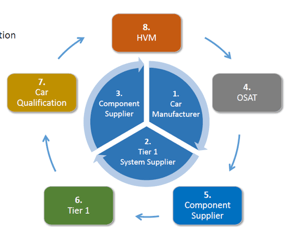As packaging practitioners/experts themselves, regular readers know that IFTLE is always on the lookout for the latest applications and the latest chips going into those applications because all those chips will have to be packaged. However, IFTLE has previously warned the reader to beware of technology hype, which appears to be increasing exponentially throughout the decades that I have lived. As I left college in the mid-1970s, scientists and engineers could always be believed because they were among the most conservative of our society vs, i.e marketing types ( such as those portrayed on the AMC show “Mad Men”).
In recent times, just think about the hype linked to technologies like 3D IC in terms of what was promised on roadmaps and how long it has actually taken to get where we are today.
Is the Autonomous Vehicle Market Over-hyped?
Automotive is certainly on everyone’s list as a current high growth area for the future. This is mainly driven by the expectation that autonomous vehicles are right around the corner.
Not to be a kill-joy, but IFTLE would tend to lean towards those who think this technology is being hyped a bit too much and would bet on the timespan for adoption being closer to what we have seen for 3DIC. For a nice discussion of the topic try this blog “Road not fully constructed” by Ed Sperling.
In addition, IFTLE has previously warned its readers that historically the automotive industry has been an extremely low-profit business for materials and component suppliers.
With that said, there is still a lot going on in terms of new packaging technologies being introduced into today’s automotive market. Let’s take a look at a couple of the automotive electronic packaging presentations from this year’s IMAPS Device Packaging Conference.
NXP – Automotive Solder Joint Reliability
NXP authors gave a very nice review of “Solder Joint Reliability of BGA Packages in Automotive Applications” Automotive market trends are driving increased focus on solder-joint performance, including:
- Increasing electronic content of new automotive functions such as advanced driver assistance
- Decreasing interconnect pitch which reduces solder stand-off height
- A multitude of package variations
Board Level Reliability Requirements
Automotive component qualifications follow AEC Q100
- -40 to +125 cycling, 1500 cycles with no fail
- Crack propagation analysis using cross-sectioning and dye penetrant
- Test to > 50% failure to generate Weibull statistics
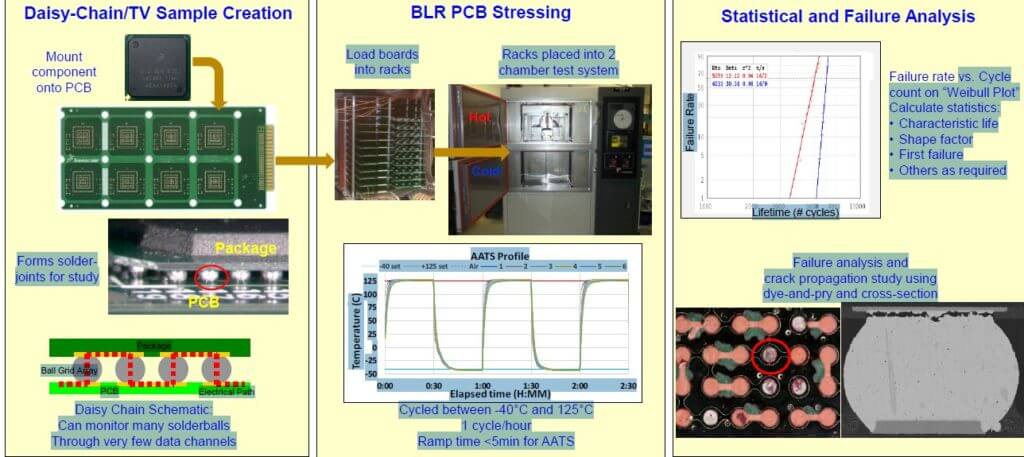
In general, they conclude that tin/silver solder shows better reliability than tin/silver/copper as shown on the Weibull plots shown below.
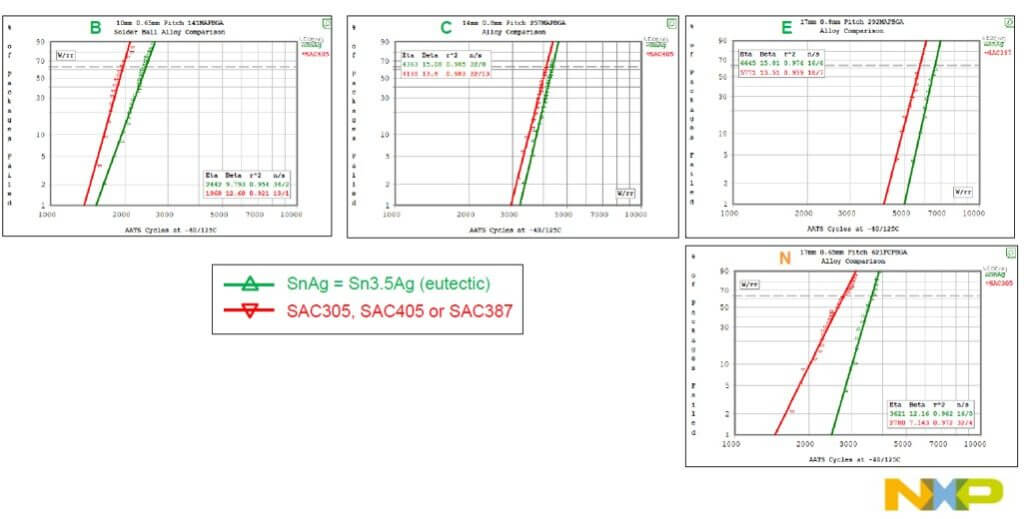
Other conclusions include:
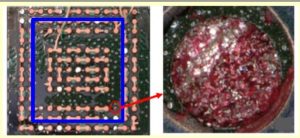
- Larger PCB pads tend to move the failure site from the PCB side to the package side
- Larger die reduce solder joint reliability lifetime
- In smaller packages, failure tends to occur under the edge of the die (Figure 3)
- Dye penetration analysis can be used to determine the location of cracked solder joints
JCET – Auto Qualifications
Vinayak Panday VP of Failure Analysis at JCET discussed “Minimum Requirements for Automotive Qualifications, with a Packaging Focus”.
Automotive semiconductor device categories are shown in Figure 4.
 Device Categories:
Device Categories:
- Segments are dominated by different semiconductor families
- All segments show significant growth rates
- Wirebond still dominates packaging
- New packaging technology is entering the automotive market
- Flip chip BGA, flip chip CSP, and MEMS are reaching maturity
- Wafer-level packaging and system-in-package are penetrating the automotive market now
The timeline for the automotive infrastructure is shown in Figure 3.
Automotive Design-in Time Line

Figure 4: Automotive timeline. (Courtesy of JCET) Car manufacturer defines system
- Tier 1 design and component spec
- Component supplier device design
- Package design and qualifications
- Component qualifications
- System qualifications
- Summer/winter testing
- High volume manufacturing ramp
Suppliers must meet the following standards:
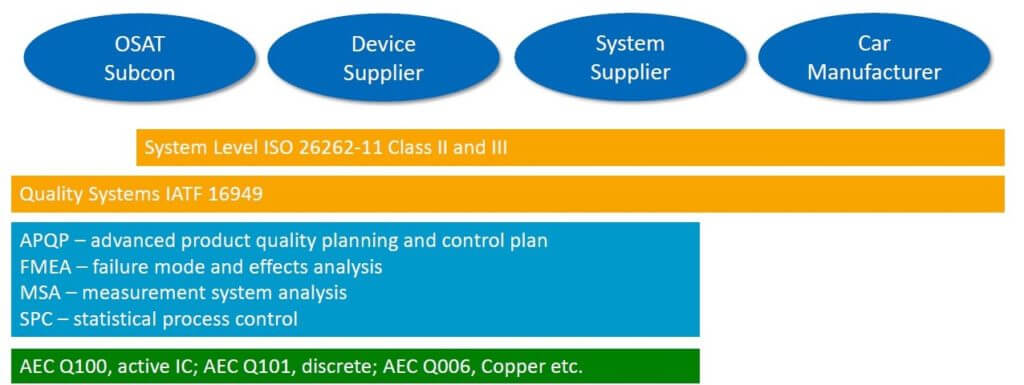
Operation temp restrictions are as follows:
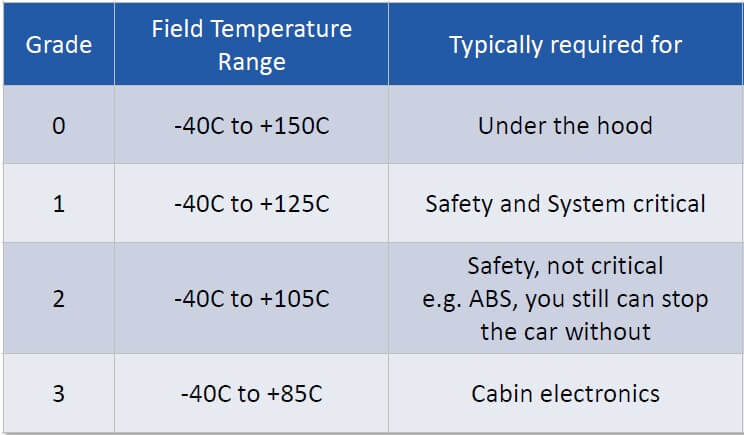
For all the latest on Advanced Packaging stay linked to IFTLE……………………………






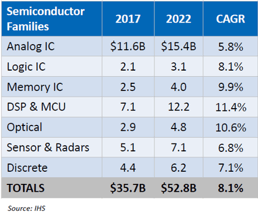 Device Categories:
Device Categories: